 W
WJill Ellen Abramson is an American author and journalist. She is best known as the former executive editor of The New York Times; Abramson held that position from September 2011 to May 2014. She was the first female executive editor in the paper's 160-year history. Abramson joined the New York Times in 1997, working as the Washington bureau chief and managing editor before being named as executive editor. She previously worked for The Wall Street Journal as an investigative reporter and a deputy bureau chief.
 W
WAesop was a Greek fabulist and storyteller credited with a number of fables now collectively known as Aesop's Fables. Although his existence remains unclear and no writings by him survive, numerous tales credited to him were gathered across the centuries and in many languages in a storytelling tradition that continues to this day. Many of the tales are characterized by animals and inanimate objects that speak, solve problems, and generally have human characteristics.
 W
WAvianus a Latin writer of fables, identified as a pagan.
 W
WAmbrose Gwinnett Bierce was an American short story writer, journalist, poet, and Civil War veteran. His book The Devil's Dictionary was named as one of "The 100 Greatest Masterpieces of American Literature" by the American Revolution Bicentennial Administration. His story "An Occurrence at Owl Creek Bridge" has been described as "one of the most famous and frequently anthologized stories in American literature"; and his book Tales of Soldiers and Civilians was named by the Grolier Club as one of the 100 most influential American books printed before 1900.
 W
WBiernat of Lublin was a Polish poet, fabulist, translator and physician. He was one of the first Polish-language writers known by name, and the most interesting of the earliest ones. He expressed plebeian, Renaissance and religiously liberal opinions.
 W
WHelena Petrovna Blavatsky was a controversial Russian occultist, philosopher, and author who co-founded the Theosophical Society in 1875. She gained an international following as the leading theoretician of Theosophy, the esoteric movement that the society promoted.
 W
WManuel Maria Barbosa l'Hedois du Bocage, most often referred to simply as Bocage, was a Portuguese Neoclassic poet, writing at the beginning of his career under the pen name Elmano Sadino.
 W
WAlexandre Chatrian was a French writer, associated with the region of Alsace-Lorraine. Almost all of his works were written jointly with Émile Erckmann under the name Erckmann-Chatrian.
 W
WCarol Emshwiller was an American writer of avant garde short stories and science fiction who has won prizes ranging from the Nebula Award to the Philip K. Dick Award. Ursula K. Le Guin has called her "a major fabulist, a marvelous magical realist, one of the strongest, most complex, most consistently feminist voices in fiction". Among her novels are Carmen Dog and The Mount. She has also written two cowboy novels called Ledoyt and Leaping Man Hill. Her last novel, The Secret City, was published in April 2007.
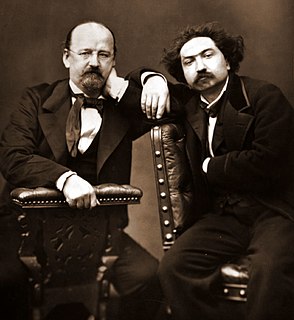 W
WErckmann-Chatrian was the name used by French authors Émile Erckmann (1822–1899) and Alexandre Chatrian (1826–1890), nearly all of whose works were jointly written.
 W
WÉmile Erckmann was a French writer, strongly associated with the region of Alsace-Lorraine. Almost all of his works were written jointly with Alexandre Chatrian under the name Erckmann-Chatrian.
 W
WJohn Gay was an English poet and dramatist and member of the Scriblerus Club. He is best remembered for The Beggar's Opera (1728), a ballad opera. The characters, including Captain Macheath and Polly Peachum, became household names.
 W
WAmelia Gray is an American writer. She is the author of the short story collections AM/PM, Museum of the Weird, and Gutshot, and the novels THREATS, and Isadora. Gray has been shortlisted for the PEN/Faulkner Award for Fiction and her television writing has been nominated for a WGA Award.
 W
WSir Henry Rider Haggard was an English writer of adventure fiction set in exotic locations, predominantly Africa, and a pioneer of the lost world literary genre. He was also involved in agricultural reform throughout the British Empire. His stories, situated at the lighter end of Victorian literature, continue to be popular and influential.
 W
WJoel Chandler Harris was an American journalist, fiction writer, and folklorist best known for his collection of Uncle Remus stories. Born in Eatonton, Georgia, where he served as an apprentice on a plantation during his teenage years, Harris spent most of his adult life in Atlanta working as an associate editor at The Atlanta Constitution.
 W
WRobert Henryson was a poet who flourished in Scotland in the period c. 1460–1500. Counted among the Scots makars, he lived in the royal burgh of Dunfermline and is a distinctive voice in the Northern Renaissance at a time when the culture was on a cusp between medieval and renaissance sensibilities. Little is known of his life, but evidence suggests that he was a teacher who had training in law and the humanities, that he had a connection with Dunfermline Abbey and that he may also have been associated for a period with Glasgow University. His poetry was composed in Middle Scots at a time when this was the state language. His writing consists mainly of narrative works. His surviving body of work amounts to almost 5000 lines.
 W
WNalo Hopkinson is a Jamaican-born Canadian speculative fiction writer and editor. As of 2013, she lived and taught in Riverside, California. Her novels and short stories such as those in her collection Skin Folk often draw on Caribbean history and language, and its traditions of oral and written storytelling.
 W
WLouis Jensen is a Danish author who is an innovator in the international literary trends of flash fiction, metafiction, prose poetry, and magical realism. While he has published more than 90 books for both adults and children, he is best known for his children's books, which include picture books, short stories, flash fiction, creative nonfiction and novels. His work is characterized by wordplay and playful experiments in form and structure, which have led critics to draw comparisons to Borges, Calvino, Gogol, and the poetry of the Oulipo movement. His work is also rooted in the fairy tale and folk tale tradition, and is deeply influenced by the Danish author Hans Christian Andersen.
 W
WFranz Kafka was a German-speaking Bohemian novelist and short-story writer, widely regarded as one of the major figures of 20th-century literature. His work fuses elements of realism and the fantastic. It typically features isolated protagonists facing bizarre or surrealistic predicaments and incomprehensible socio-bureaucratic powers. It has been interpreted as exploring themes of alienation, existential anxiety, guilt, and absurdity. His best known works include "Die Verwandlung", Der Process, and Das Schloss. The term Kafkaesque has entered the English language to describe situations like those found in his writing.
 W
WIgnacy Błażej Franciszek Krasicki, from 1766 Prince-Bishop of Warmia and from 1795 Archbishop of Gniezno, was Poland's leading Enlightenment poet, a critic of the clergy, Poland's La Fontaine, author of the first Polish novel, playwright, journalist, encyclopedist, and translator from French and Greek.
 W
WLeonardo da Vinci was an Italian polymath of the High Renaissance who is widely considered one of the most diversely talented individuals ever to have lived. While his fame initially rested on his achievements as a painter, he also became known for his notebooks, in which he made drawings and notes on science and invention; these involve a variety of subjects including anatomy, astronomy, botany, cartography, painting, and palaeontology. Leonardo's genius epitomized the Renaissance humanist idea, and his collective works compose a contribution to later generations of artists rivalled only by that of his contemporary Michelangelo.
 W
WMagnus Gottfried Lichtwer was a German fabulist.
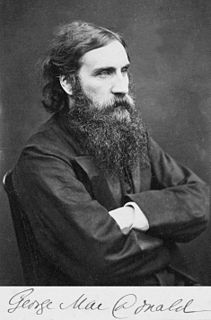 W
WGeorge MacDonald was a Scottish author, poet and Christian minister. He was a pioneering figure in the field of modern fantasy literature and the mentor of fellow writer Lewis Carroll. In addition to his fairy tales, MacDonald wrote several works of Christian theology, including several collections of sermons.
 W
WWilliam March was an American writer of psychological fiction and a highly decorated US Marine. The author of six novels and four short-story collections, March was praised by critics but never attained great popularity.
 W
WWilliam Holmes McGuffey was a college professor and president who is best known for writing the McGuffey Readers, the first widely used series of elementary school-level textbooks. More than 120 million copies of McGuffey Readers were sold between 1836 and 1960, placing its sales in a category with the Bible and Webster's Dictionary.
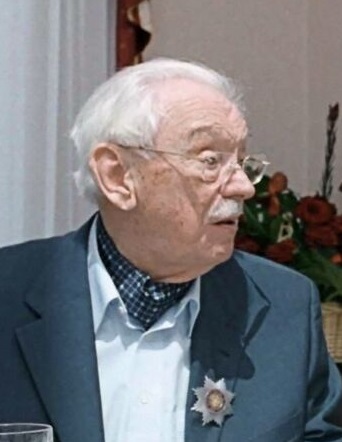 W
WSergey Vladimirovich Mikhalkov was a Soviet and Russian author of children's books and satirical fables. He wrote the lyrics for the Soviet and Russian national anthems.
 W
WNankichi Niimi was a Japanese author, sometimes known as the Hans Christian Andersen of Japan.
 W
WYsengrimus is a Latin fabliau and mock epic, an anthropomorphic series of fables written in 1148 or 1149, possibly by the poet Nivardus. Its chief character is Isengrin the Wolf; the plot describes how the trickster figure Reynard the Fox overcomes Isengrin's various schemes.
 W
WPrince Sulkhan-Saba Orbeliani was a Georgian writer and diplomat. Orbeliani is noted in part due to his important role as an emissary of Georgia to France and the Vatican, where he vainly sought assistance on behalf of his beleaguered King Vakhtang VI.
 W
WGaius Julius Phaedrus was a 1st-century CE Roman fabulist and the first versifier of a collection of Aesop's fables into Latin. Few facts are known about him for certain and there was little mention of his work during late antiquity. It was not until the discovery of a few imperfect manuscripts during and following the Renaissance that his importance emerged, both as an author and in the transmission of the fables.
 W
WHelen Beatrix Potter was an English writer, illustrator, natural scientist and conservationist; she was best known for her children's books featuring animals, such as those in The Tale of Peter Rabbit.
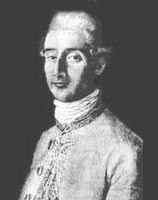 W
WFélix María de Samaniego, was a Spanish neoclassical fabulist.
 W
WChristopher Smart, was an English poet.
 W
WRobert Louis Stevenson was a Scottish novelist, poet and travel writer, most noted for Treasure Island, Kidnapped, Strange Case of Dr Jekyll and Mr Hyde, and A Child's Garden of Verses.
 W
WLilah Sturges is an American writer of comics and fantasy novels. She is best known for co-writing with Bill Willingham the Eisner-award-nominated Jack of Fables, and other comics published by Vertigo Comics / DC Comics.
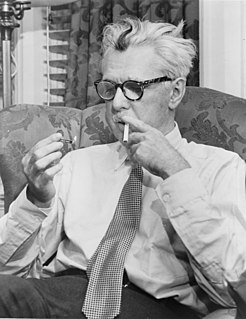 W
WJames Grover Thurber was an American cartoonist, author, humorist, journalist, playwright, and celebrated wit. He was best known for his cartoons and short stories, published mainly in The New Yorker and collected in his numerous books.
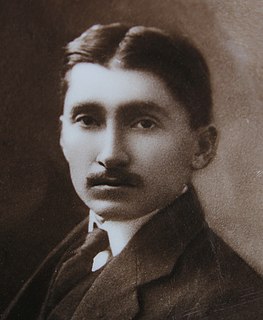 W
WUrmuz was a Romanian writer, lawyer and civil servant, who became a cult hero in Romania's avant-garde scene. His scattered work, consisting of absurdist short prose and poetry, opened a new genre in Romanian letters and humor, and captured the imagination of modernists for several generations. Urmuz's Bizarre Pages were largely independent of European modernism, even though some may have been triggered by Futurism; their valorization of nonsense verse, black comedy, nihilistic tendencies and exploration into the unconscious mind have repeatedly been cited as influential for the development of Dadaism and the Theatre of the Absurd. Individual pieces such as "The Funnel and Stamate", "Ismaïl and Turnavitu", "Algazy & Grummer" or "The Fuchsiad" are parody fragments, dealing with monstrous and shapeshifting creatures in mundane settings, and announcing techniques later taken up by Surrealism.
 W
WOttupulackal Velukkuty Vijayan, commonly known as O. V. Vijayan, was an Indian author and cartoonist, who was an important figure in modern Malayalam language literature. Best known for his first novel Khasakkinte Itihasam (1969), Vijayan was the author of six novels, nine short-story collections, and nine collections of essays, memoirs and reflections.
 W
WVishnu Sharma is said to be an Indian scholar and author who is believed to have written the Panchatantra collection of fables. The exact period of the composition of the Panchatantra is uncertain, and estimates vary from 1200 BCE to 300 CE.Some scholars place him in the 3rd century BCE.
 W
WWilliam Willingham is an American writer and artist of comics, known for his work on the series Elementals and Fables.